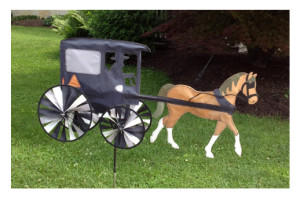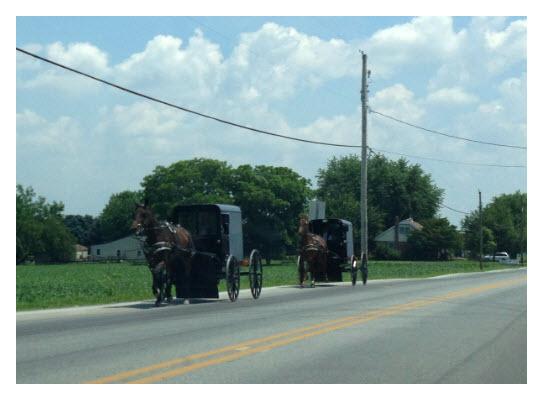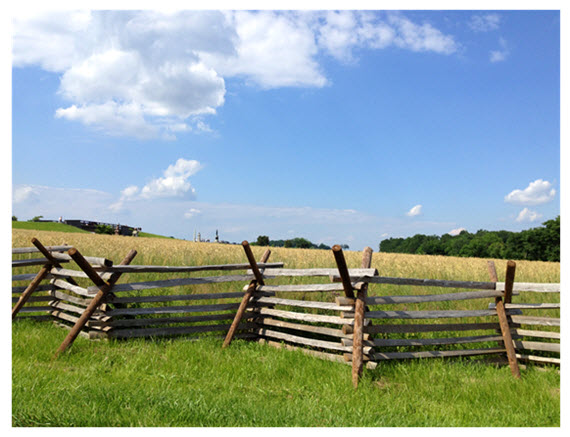Most of us have heard mention of the belief that a photograph can steal the soul.
 There are references to Native Americans refusing to have their pictures taken in the late 19th and early 20th centuries, and references to Australian Aborigines as well. I have never confronted this notion in any personal way nor even considered it. At least, not until a few weeks ago.
There are references to Native Americans refusing to have their pictures taken in the late 19th and early 20th centuries, and references to Australian Aborigines as well. I have never confronted this notion in any personal way nor even considered it. At least, not until a few weeks ago.
At that time, a stroke of luck yielded an exceptional image of a young man.
But not any young man.
I happened to be in the passenger seat of a car cruising through Pennsylvania Dutch country – a story in and of itself – as I live some 800 miles away. It was a Sunday afternoon, I am a city dweller at heart, and consequently, shooting images out the window was irresistible. I found myself marveling at horses grazing, rows of crops, white clapboard barns, and clusters of storefronts and homes as we meandered our way through charming towns.
Rolling along at 25 miles per hour on virtually empty roads, I took dozens of pictures uncertain what might turn out. Among them were Amish buggies, and I was careful not to be intrusive, or so I thought.
Though I didn’t fully realize it at the time, I had captured a young man’s face and body – full on.
While the Amish may not believe that photography steals the soul, they do believe in humility over pride, and substance over image. As this resource on the Pennsylvania Dutch explains:
… the Amish believe that photographs in which they can be recognized violate the Biblical commandment, “Thou shalt not make unto thyself a graven image.”
As for the subject of my accidental portrait, I would place his age at roughly twenty. Gazing at the picture I took, he is the epitome of vitality, and the transitional stage between adolescence and adulthood. His reddish brown hair is wavy and tousled. His dark eyes are framed by thick, feathery brows. His pale skin is clear with a hint of stubble above the lip. In fact, he bears a resemblance to my 21-year old son.
In that moment, the collar of his white shirt is unbuttoned and his sleeves rolled up – the temperature must have been 90 degrees. His forearms appear strong, and one hand, fingers splayed, is resting on his knee.
Dare I say it, he is masculine, yet beautiful.
Remarkably, he was looking directly at me, as curious about the person in the car as I was about him, or might have been, had I known what my lens had registered and my own eye had not.
Yet there was no permission to take this photo, and the Amish don’t wish for recognizable faces to be photographed by visitors.
 Was I one of hundreds who had done the same before me? Is anything fair game for the tourist’s camera – even inadvertently? Was I stealing his soul? Was I violating his privacy? Was I breaking something in his belief system, which is not mine to break?
Was I one of hundreds who had done the same before me? Is anything fair game for the tourist’s camera – even inadvertently? Was I stealing his soul? Was I violating his privacy? Was I breaking something in his belief system, which is not mine to break?
I am not a photographer, and I possess no special skill in this arena. Like most of us, I want images as remembrances of my loved ones and places I visit.
That afternoon and evening there was a drive through Intercourse (amusing), through Gettysburg (eerily quiet), and eventually through the Shenandoah Valley (magnificent). My pictures will remind me not only of the Amish, but of our tiny towns, our mountain ranges, and the conflicts that punctuate our country’s complicated history.
As for the man in whom I clearly see the boy, I have lingered over that rare quality of an utterly unguarded expression. The moment feels private, and yes, stolen. To share his image would be absolutely wrong – an act of disrespect. Yet I do not regret the moment I captured by accident, which for me remains personal, and somehow, pitch perfect.
I say that, however seemingly a contradiction, as I relish an important lesson from the aforementioned source on the Amish:
They want to be remembered by the lives they lived and the examples they left, not by physical appearance.
What would it be like if the rest of us could say as much?
You May Also Enjoy


What a beautiful post. And thank you for showing respect. For the same reason, you will not find any photos of Moroccan women on my blog or facebook page. They are fine with being photographed, but to share their image publicly with the world is shameful to them. It suggests that they are showing themselves in a way that is not appropriate. So, yes, we are left to show with words, rather than photographs — not a bad challenge for a writer, especially in the age of selfies and Instagram where every moment seems to be captured and shared online.
I know what you mean about our age of selfies, etc. I wonder if we forget how special a single image can be.
Lovely post. I so enjoy your musings.
So glad you enjoyed, Cornelia.
I very much relate to the idea of substance over form, and humility and restraint over hubris and exhibitionism. That said, I doubt if the object of your picture would object to being accidentally revealed. One of the advantages of not seeking exposure is that when it accidentally occurs, the event is so much more natural, and therefore exquisite. Something like how Muslim women veil themselves, letting the imagination making the eventual “reveal” so much more enjoyable.
I have been privy to this myself. I have had what I consider to be moments of joy over the years simply by taking note of the small glimpses of the women in the cars ahead of me in creeping traffic, a wrist here, and elbow or shoulder there, a certain jaw profile reflected in the mirror. People have natural beauty in ways you would not expect, and it is highlighted by natural, unpretentious behavior. Simply seeing a woman (almost any woman) toss her hair in abandon when she thinks she is unobserved is a micro-moment of mega-feminine enjoyment which goes a long way to making life worthwhile.
What a lovely comment, Robert, and a reminder to women (including me) of the little things men notice.
Though ‘technically’ he didn’t make himself into a graven image, you did, I think it’s the right thing not to publish his photo. Surely most of us who have the privilege of living to an old age come to wish to the remembered by our deeds rather than our appearance? I wish race organisers and spectators would be as sensitive as you and to not publish photographs of me while I’m running, my times are bad enough without my appearance as well!
This is a very poignant post. Having quite a few Amish and Mennonite sects in our area, we are familiar with their reluctance to be photographed. Because I find them fascinating, I have snapped a few shots but never of their faces out of respect for their beliefs. And who could argue with the philosophy of being remembered for the type of person we are rather than how we looked? Although having photos of those we love can a comfort when they are no longer with us.
It’s strange, Lisa. When I saw the image on my computer screen, days after I took it, I wondered if I should delete it altogether. But I couldn’t bring myself to do so. It is such a fleeting yet universally beautiful moment, or so it is to me, that reminds me of everything wonderful in youth and as I said, of my younger son. To share it would be wrong, and for me, I feel the same about destroying it.
Oh, and I’m so with you on the comfort of photographs for those no longer with us.
I was there, last year and I was in your shoes. I was careful to not take pictures of people, but I took many of the countryside. and, yes, some buggys too. I wanted to capture the peace and the beauty, and to be able to remember those feelings and the lessons a simpler life could teach me.
Thank you for treating your photograph with reverence. Your intentions are honorable, and your wish for it comes from the heart.
I agree, lunaboogie. It’s such a grounding and peaceful place, and I was quite taken by the landscape as well. (Surprising, for a City Girl.) 😉
How very wonderful, and respectful!
What a way to be remembered. Very thoughtful post. Thanks DA!